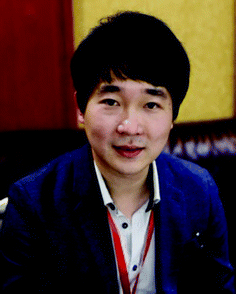Introduction to Luminogenic bioprobes for personal health technologies
Youhong
Tang
 *a and
Dan
Ding
*a and
Dan
Ding
 *b
*b
aAustralia–China Joint Centre for Personal Health Technologies, Medical Device Research Institute, Flinders University, South Australia, 5042, Australia. E-mail: youhong.tang@flinders.edu.au
bAustralia–China Joint Centre for Personal Health Technologies, State Key Laboratory of Medicinal Chemical Biology, Frontiers Science Center for Cell Responses, Key Laboratory of Bioactive Materials, Ministry of Education, and College of Life Sciences, Nankai University, Tianjin, 300071, China. E-mail: dingd@nankai.edu.cn
For many years, biological markers have been considered to be one of the most critical components for monitoring patients’ health. They can be used to measure the state of patients, provide feedback for the effective application of treatment strategies or evaluate everyday processes, pathogenic processes or pharmacological responses to therapeutic intervention. Organic luminogenic bioprobes provide robust and powerful analytical techniques for the direct detection and monitoring of important biological markers in various bodily fluids including saliva, blood, urine or sweat samples. In contrast to conventional fluorophores with the aggregation-caused quenching effect, aggregation-induced emission luminogens (AIEgens) exhibit remarkable photophysical properties such as bright fluorescence in the aggregate or solid state, large Stokes shifts, excellent photostability and long retention time in live samples. Benefiting from these advantages, AIEgen-based bioprobes are widely applied in various biomedical areas. The rapid and widespread rollout of low-cost, accurate AIEgen applications can pick up disease biomarkers at very low concentrations.
In the pandemic age of telehealth and new technologies, remote site lab or point-of-care (POC) testing of bodily fluids are potentially rapid and non-invasive ways to test for most diseases – including COVID-19. Every drop of bodily fluid holds valuable clues to a person's health. The bioprobe industry is rapidly responding to the rising need for the fast screening and early detection of diseases from body fluids. Personal health technologies offer the ability to empower healthy choices, manage personal care, identify health conditions early in their course and optimise visits to health professionals.
The newly established Australia–China Joint Centre for Personal Health Technologies, led by Flinders University, Australia and Nankai University, China and partnering with La Trobe University, South China University of Technology, Shandong Academy of Sciences, Motherson Innovations and AIEgen Biotech, tries to break down disciplinary boundaries, leverage unique capabilities from China and Australia and foster collaborative research to advance developments in an exciting new technology area of luminogenic bioprobes with AIE features and apply these to personal health. Organized by this Joint Research Centre, this themed collection showcases the most recent and important research findings in luminogenic bioprobes for personal health technologies, especially emerging AIEgen based bioprobes.
Acknowledgements
This work was supported by Australia-China Science and Research Fund - Joint Research Centre on Personal Health Technologies in Australia, and the National Key R&D Program of China (Intergovernmental cooperation project, 2017YFE0132200) in China.| This journal is © the Partner Organisations 2021 |


